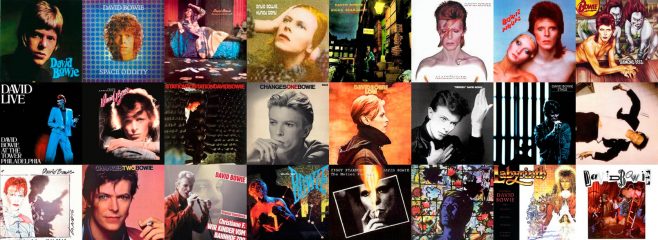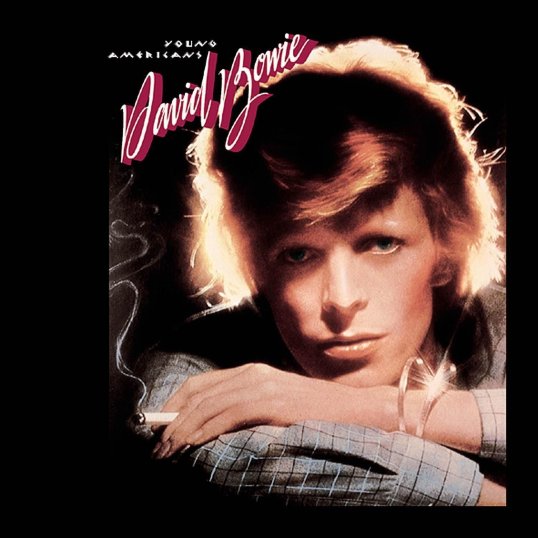
“Young Americans” is David Bowie’s 9th studio album and was originally released on 7 March 1975.
Now we’re reached the Top 20, the quality of album is really starting to crank up.
By mid 1974, Bowie was creeping ever deeper into a rather dark place with massive international fame not being quite what he hoped it to be. With the gruelling “Diamond Dogs” tour and the pressures of outrageously complex theatrical nightly performances, with relationships with both his wife and his manager quickly deteriorating and on a famous diet consisting of just milk, peppers and cocaine, Bowie was both skeletal and barely coping. This was all so well documented in the brilliant “Cracked Actor” BBC documentary (watch it here).
In this environment, it’s extraordinary that Bowie decided to change his musical direction so radically from the “Glam Rock” genre that Bowie had mastered so well to the disco, black influenced “plastic soul” that was the “Young Americans” album. It was the first time while in a position of fame that Bowie decided to take such a dramatic change of musical direction and while this started his unique reputation of being the “Chameleon of Rock”, it’s easy to forgot how much professional courage such an undertaking would have required. It could so very easily have backfired resulting in critical ridicule and the mass abandonment from his legion of fans. The fact Bowie succeeded in producing such a fine album that was a huge commercial success, especially in the tough American market where the album reached the Top 10 is a testament to the musical genius that is Bowie.
Recorded primarily during a break in the “Diamond Dogs” tour at the famous Sigma Sounds studio in Philadelphia, USA, Bowie himself described his new album somewhat derogatory as “Plastic Soul”. In truth it was anything but “plastic” or “fake” having garnered a group of highly talented (mainly) black musicians that injected a high degree of authenticity into the new album.
The only musician to survive from previous albums was pianist Mike Garson, although this would be his last album with Bowie for nearly 20 years. The album introduced a relatively unknown Puerto-Rico guitarist Carlos Alomar, who would work with Bowie for the majority Bowie’s future albums. On bass and drums were the very well respected session musicians Wellie Weeks and Tony Newmark respectively and on saxophone, the then almost unknown David Sanborn who would bring such a rich sound to the album. The impressive cast doesn’t end there. Backing vocalists included Ava Cherry, Robin Clark and a then almost unknown Luther Vandross.
Bowie would record two tracks later on in New York at the Electric Lady Studios when he got together with the one and only John Lennon, where two more highly important Bowie musicians were first introduced, Earl Slick on guitar and Dennis Davis on drums.
One other key ingredient to add into the mix was Tony Visconti, who after helping to mix the previous “Diamond Dogs” album, was reunited with Bowie for his second spell as album producer and in this case also studio engineer during the Stigma Sounds sessions.
With such an amazing cast of musicians and with the unique writing ability of David Bowie, a great album was almost guaranteed. Bowie loved “black” music that was dominating much of the US music scene at the time and wanted to create his own version of the Philly Sound, Motown, Soul Train, black styled music. He succeeded wonderfully and created one of the first white “disco” albums, before the likes of The Bee Gees, KC and the Sunshine Band,etc. made it hugely mainstream.
Don’t get me wrong, “Young Americans” is a wonderful album, but for a couple of key reasons I rate this as my least favourite album of Bowie’s unbelievable 70’s output. Music is a funny thing and much comes down to personal preferences and it’s just that disco/soul however you want to label it, is just not my favourite style of music, especially when it comes to Bowie. As much as I enjoy this album, I simply enjoy all the other Bowie albums to come in my rankings just that bit more. Additionally, there are a couple of tracks that brings down the album overall from what it could have been and that’s all it takes to be rated lower than the awesome competition.
The album kicks off with one of Bowie best known songs, the title track “Young Americans“. Describing the struggles of a young couple in post-Nixon USA, the joyous musical arrangement belies the hard hitting lyrics. Like much of the album, the track is basically recorded live in the studio and gives the song a wonderful vibe and feel that is perfectly captured by Visconti. The funky groove is fabulous as is Sanborn’s sax and with Bowie fast-flowing lyrics, this really is a classic track. The highlights for me though are the re-use of Lennon’s famous line “I heard the news today, oh boy” and the wonderful climax “Ain’t there one damn song that can make me break down and cry?“. This was released as the lead off single and became Bowie’s first top 20 US hit. No wonder really. There was no official video for this, although Bowie’s performance on the “Dick Cavett Show” is a good substitute. See it here.
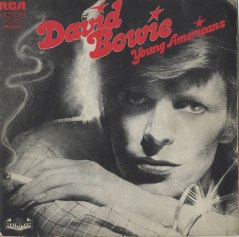
The next track “Win” is my favourite offering here. It’s a truly wonderful song, with Sanborn’s sax a particular highlight. It’s slower, more mellow and less wordy than much of the album and has a feel that reminds me somewhat of the “Station To Station” album to come. Bowie’s vocals move from tender to downright ominous as he sings “Someone like you should not be allowed to start any fires“. This track along with the next (“Fascination”) were both recorded later in the year at the Record Plant studios in New York to in theory complete the album and so has a slightly different feel. I’ve always loved this track and as they say is worth price of admission alone.
“Fascination” comes next with that funky groove in full swing and with Carlos Alomar’s rhythm guitar dominating throughout. Co-written with Luther Vandross and recorded in New York, the vocal arrangements with Bowie following the backup vocals during the chorus is particularly catchy. “I know people think I’m a little crazy” does rather sum up Bowie’s experiences in the US. It’s a solid all-round track that is typical of the sound that Bowie was after with this album.
“Right” is a mellow track with Bowie in fine form vocally but the unfortunate backing vocalists really struggled with the odd-ball time signatures and in-out timings (as documented on both the “Cracked Actor” and “Five Years” BBC documentaries). It’s one of my less preferred tracks although when it swings through the motions during the second half of the song, it does have a hypnotic feel. Perhaps because it was so difficult to record, this is one of those rare Bowie originals that has never been performed live.
“Somebody Up There Likes Me” which opens side two in many ways is the centre-piece of the album and perfectly encapsulates the album, with it’s smooth yet funky guitar driven arrangements, catchy backing vocals, Bowie’s cool delivery and with Sanborn’s sax floating over everything. The blue-eyed soul boy at his best.
“Across The Universe” is where things go very wrong. In early 1975, Bowie teamed up with John Lennon and decided to record a few tracks together at the Electric Lady studios in New York. This track is one of the results of their collaboration, a cover of Lennon’s/The Beatles classic and it just doesn’t work and it just doesn’t fit within the theme of the album. It’s bland and boring with the real tragedy being that much much better tracks were dropped to make room for this. I can only imagine Tony Visconti’s shock at hearing that this song (which would have made a perfect B-side to “Fame”) meant “Who Can I Be Now?” and “It’s Gonna Be Me” had to be dropped from the album. If not for this track, this album would likely have been rated a few notches higher, it’s that close.
“Can You Hear Me” is one of the weaker tracks on the album, a ballad with a much more simplistic arrangement and featuring Bowie’s least impressive vocal performance. It’s just one of those tracks that I’ve never got into and adds weight for this to be Bowie’s least impressive 70’s era album.
“Fame” is the second track to be included from the Lennon sessions and is altogether a different story. Here, Visconti can’t argue that this fully deserves it’s place on the album. Featuring a killer guitar line by Alomar (based in turn on “Foot Stompin” which Bowie had been unsuccessfully working on) and Lennon’s high pitched “Fame” backing vocal, this has become one of Bowie most loved treasures. Detailing Bowie’s disappointment having finally achieved fame, the use of multi-speed vocals is brilliant and classic Bowie. Released as the second single off the album, it achieved No 1 status in the US (Bowie’s first), one of the very few singles to chart higher in the US than in the UK where it only reached a relatively disappointing 17. Bowie no doubt thrilled to work with his hero Lennon would rank this as one of his favourite songs, with it being the song he would perform live the most throughout his career. Bowie also re-mixed “Fame” in 1990 for the movie “Pretty Woman” which had a rather excellent video. Again, there was no official video for the original “Fame”, although Bowie’s humorous, poorly lip-synced performance on Soul Train (the first white performer to feature) has become the unofficial video. Fame 90 Video.
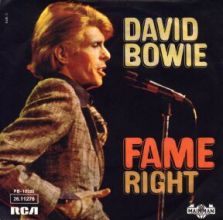
So an overall fine album, especially if you’re a fan of disco or black soul based music, but with one particular weaker moment. And a brave album, when you consider the glam rock genre that had been Bowie’s ticket to stardom and success up to that point. But Bowie hadn’t really cracked the US as he had the UK, with glam rock just not something that appealed to enough of the market there. So a brave but also an astute move of Bowie’s by predicting the success of disco and creating an album that would ultimately appeal to a much wider audience in the market he most craved to break.
The album has been re-released a number of times, with some worth a mention.
In 1991, it was re-released and remastered on CD as part of the superb Ryko/EMI Sound and Vision series where most of the reissued albums featured bonus tracks. With the “Young Americans”, these were:
“Who Can I Be Now” the first of the two tracks dropped from the original album listing to make room for the Lennon tracks. A rather nice ballad, featuring Mike Garson’s piano more predominately than elsewhere, Sanborn’s ever present sax and some wonderful backing vocal melodies, this is soooo much better than “Across The Universe”.
“It’s Gonna Be Me” is another ballad with an upfront piano based arrangement, it features Bowie’s crooning, coke-cracked vocals at its best, but overall it doesn’t quite do it for me. The whole thing comes across as a little flat and is the most “plastic” of Bowie’s tracks recorded for “Young Americans”.
“John, I’m Only Dancing Again” was recorded during these sessions and was originally planned to open the album before finally being dropped. A totally reworked version of Bowie’s glam classic “John, I’m Only Dancing”, only the chorus lyrics remain while the rest is transformed into a hip, disco driven funky jive 7 minute marathon. In the context of the album, it works rather well, but give me the original Ziggy versions anytime. This new version had previously seen the light of day when released as a single in 1979, the full version on 12” inch.
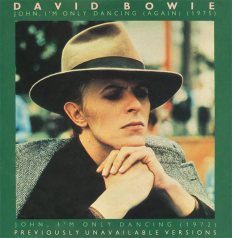
In 2007, a Special Release version of the album was re-issued again, this time including a DVD with a wonderful new 5.1 surround sound remix which gives the album a new lease of life.
In 2016, the album featured in the box set “Who Can I Be Now? (1974-1976)“, which also included a version of “The Gouster“, the original name for the “Young Americans” album, with the original track listing from just the first Sigma Sound sessions. It’s a nice to have although there’s nothing here that hasn’t already been previously released.
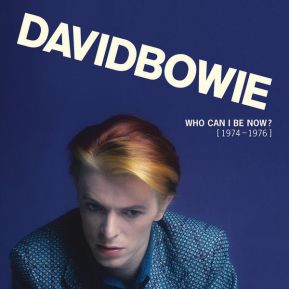
Bowie wouldn’t officially tour the album, although when he resumed the US only “Diamond Dogs” tour, it was totally revamped with all the complex sets discarded for a more intimate live experience re-badged as “The Soul/Philly Dogs” tour which did feature some of the new material. The LA performances from this part of the tour was released for the 2017 Record Store Day on the excellent triple LP “Cracked Actor (Live Los Angeles ’74)” which included both “It’s Gonna Be Me” and “John, I’m Only Dancing Again”. It has since been released on CD.
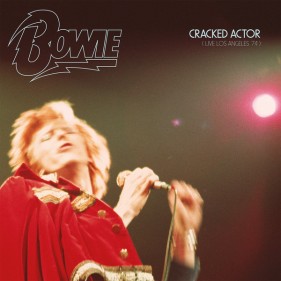
As I mentioned earlier, two fantastic BBC documentaries capture Bowie superbly during this important period. The first “Cracked Actor“, filmed in 1974 during the recording of the album in-between the Diamond Dogs tour is a simply stunning insight into Bowie at the time, struggling to cope with fame, LA and drugs. Cracked Actor Link. The second one is “Five Years“, in which five formative years are discussed in detail, including the 1974-75 period and the recording process for “Young Americans”. “Five Years Link“.
Many regard this as one of Bowie’s very best albums but for me, there are many more albums that I prefer. While enduring a coked-out hellish existence in LA, Bowie would refine the “soul boy” sound on his next album but add a layer of European influenced electronica to create a truly special masterpiece. But that’s a story for another day.
Best Tracks: Young Americans, Win, Fame
